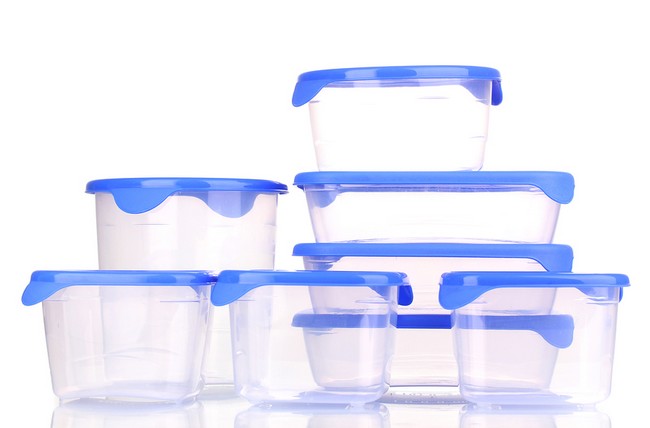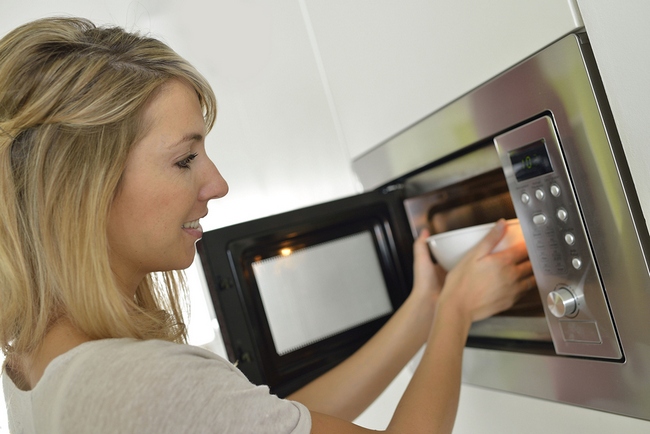- Make It Yourself Lavender Heart-Shaped Bath Bombs!
- 20 Things You Never Knew About “Down There”
- 12 Best Foods For Those Suffering From Arthritis Pain
- 12 Personal Hygiene Mistakes Almost Everyone Makes (Mom Never Told You About #4!)
- 15 Medicinal Plants And Herbs From The Cherokee People
- 12 Mind-Blowing Benefits Of Drinking Coconut Water During Pregnancy
- 12 Outstanding Winter Foods That Won’t Fatten You Up Like A Christmas Turkey
The Hidden Dangers Of Plastic Wrap

Photo credit: bigstock.com
Plastic wrap is a ubiquitous tool found in millions of people’s kitchens and homes. Since the 1950s, it has been used as a convenient way to store and preserve all kinds of foods. But new research is showing that while plastic wrap is certainly effective at doing these things, there are hidden health risks that are now coming to light, which may have you rethinking whether plastic wrap is the best choice for your kitchen.
What are the supposed risks associated with using plastic wrap?
What scientists have learned is that plastic wrap contains chemicals that can potentially contaminate the foods they are intended to preserve. The data suggests that this cross-contamination can affect things like blood pressure and reproductive health, and even increase the risk of certain forms of cancer.
For instance, before the year 2006, most plastic wrap sold in the United States was composed primarily of polyvinyl chloride (PVC), which contains compounds called phthalates.
These compounds were later associated with a higher risk of developing cancer, and were classified by the US Department of Health and Human Services as a known human carcinogen. After this, the use of PVC was largely discontinued in the manufacturing of plastic wrap sold in the US. In a study published in The Journal of Pediatrics, phthalates found in plastic wrap were also shown to produce an increase in blood pressure in young people between the ages of 6 and 19 years of age.
At the time of this writing, most plastic wrap brands now make use of phthalates-free materials such as polyvinyldene chloride or low-density polyethylene (LDPE). Unfortunately, new research has shown that this hasn’t completely solved the problem, since LDPE contains a compound called DHEA (diethylhexyl adipate). DHEA is an endocrine disruptor which has been linked to an increased risk of breast cancer in women and lower sperm levels in men, according to a report from Science Direct.
One big factor in whether the harmful chemicals in plastic wrap will seep into food is temperature. Higher temperatures are linked to significantly higher levels of chemical contamination from plastic wrap. For this reason, you should avoid microwaving foods with plastic wrap on them.
In fact, many plastic substances in addition to plastic wrap have been shown to contaminate foods and liquids when exposed to heat. Even drinking water from plastic bottles left in the sun has been shown to increase the amount of bisphenol-A (BPA) and other xenoestrogenic compounds in the body.
Continue to Page 2

Photo credit: bigstock
Safer alternatives to plastic wrap
In some countries, plastic wrap manufactures are not required by law to list ingredients used to make the product, so it’s difficult to know for sure which chemical compounds are found in the plastic wrap you may be using. The safest approach is to avoid using plastic wrap at all.
If you’re transporting food, try using a Tupperware, ceramic or glass container instead. If you need to heat your food up in a microwave oven, try using a ceramic or glass dish or container as opposed to a plastic one. Never use plastic wrap in a microwave. If you need to cover something, just use a paper towel, napkin or a plate.
The key point here is not to allow direct contact between plastic wrap (or any other kind of plastic) and your food while it is being heated. Opting for non-toxic glass and ceramic will reduce all risk of exposure, a simple but very effective solution.
Similarly, you should take precautions with drinks sold in plastic bottles. Even if those cheap bottles of water are cool, it’s still possible that they were left sitting out in the sun during transit or prior to being placed on store shelves. You just don’t know. The safest approach is to avoid drinking from disposable plastic bottles if you can, and use stainless steel or BPA-free reusable hard plastic bottles instead.
READ ALSO: The Shocking Things That Happen When You Don’t Recycle Old Plastic
Does this mean that it’s time to panic if there’s plastic wrap covering some of your food in the fridge right now? No. It’s just something to be aware of. Remove the wrap when you decide to heat the food, and you’ll be fine. A few simple precautions can go a long way toward protecting you from the health risks posed by the chemicals in plastic wrap and other plastic products.
References:
































Scoob Edoo
Jun 12, 2017 at 10:18 am
Please work on getting some of your facts straight or straighter. LDPE wrap doesn’t contain DEHA as it doesn’t need a plasticizer to remain flexible. DEHA is not an endocrine disruptor, either.
Beach Potato
Jun 12, 2017 at 1:24 pm
Google the write up by Dr. Meccola. He states the plastic wrap LDPE does contain trace amounts of DEHA. Please do your homework before throwing shade on an excellent and well researched piece.
Scoob Edoo
Jun 12, 2017 at 11:05 pm
Well if the all-knowing, infallible Mercola said it, it must be true. Lemming.